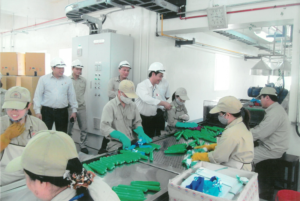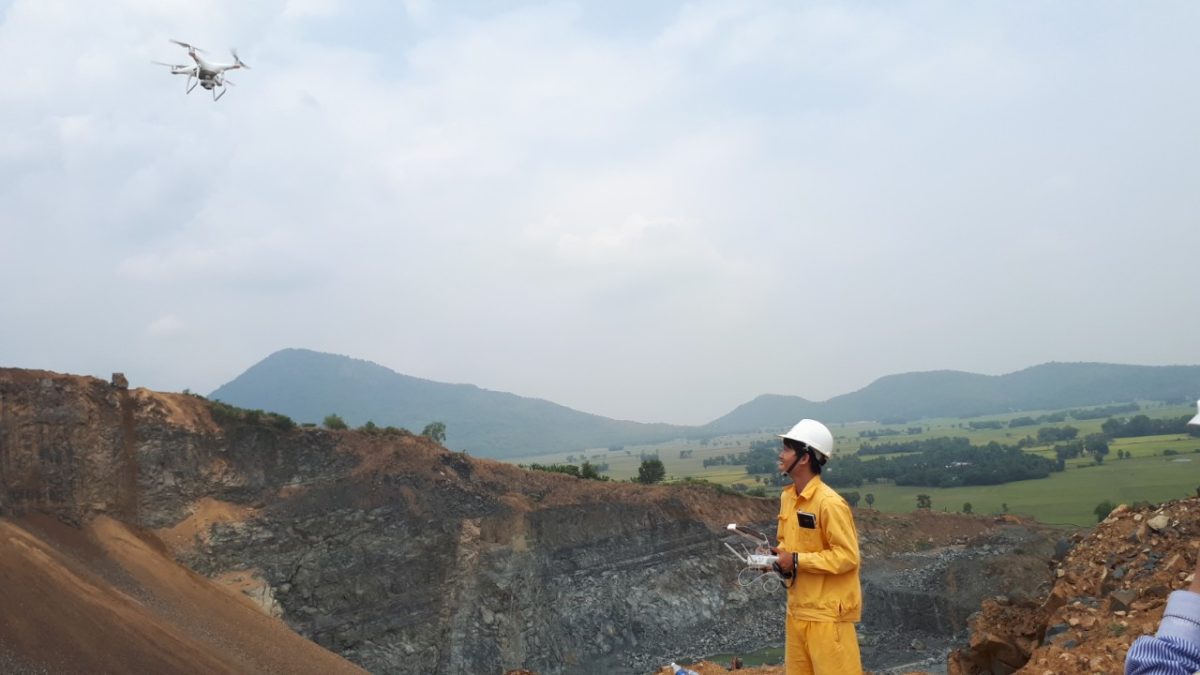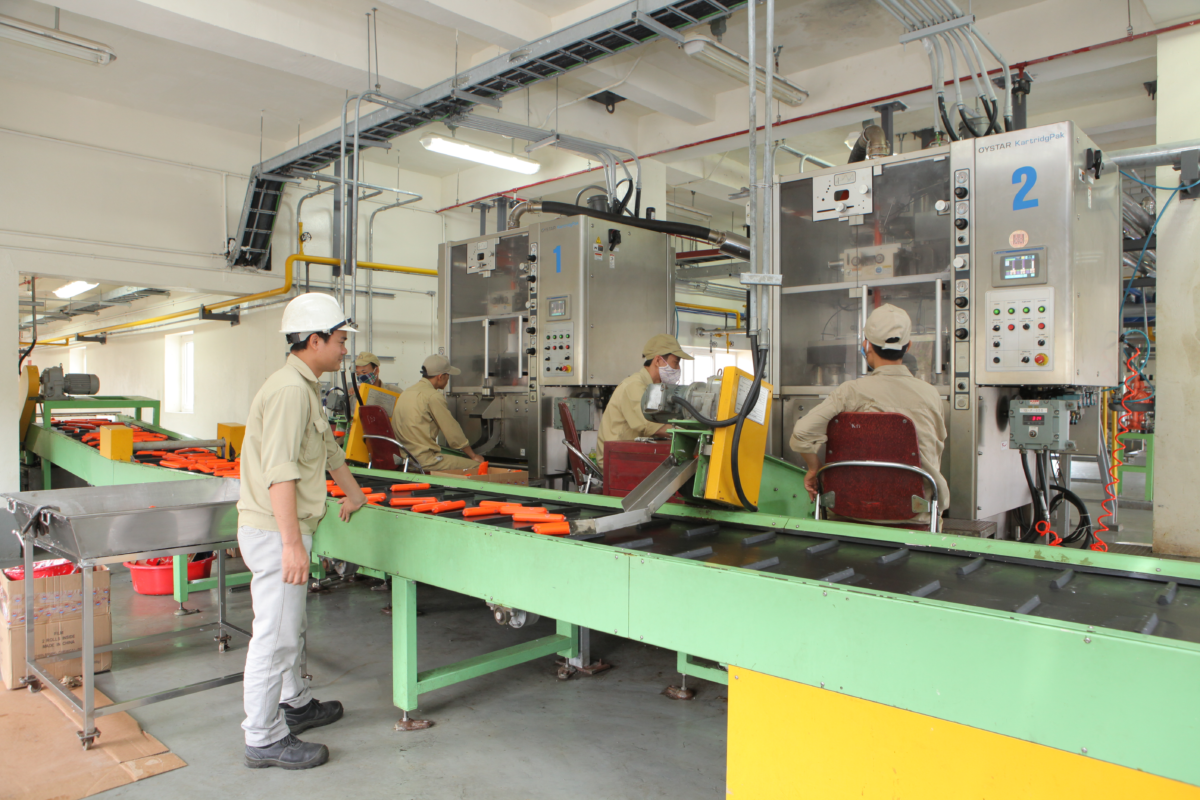High energy emulsion explosives for open pit Mines HPEX-01

Until now, in Vietnam, we use emulsion explosives packers with average explosive energy characteristics such as: NTLĐ, NTLĐ2, P113, .. to blasting for underground mines without explosive dust and for open pit mines. When using these types of explosives, the ability and efficiency to break rock during blasting is not high, the powder factor is still large because the explosive energy of new explosives is in the medium form.
As a primer in open-pit mines, 100% high-energy detonators with the main ingredients of TNT are currently using, such as high-energy detonators: VE05A, MN31, TMN-15H…. The advantages of these primers are good detonation of less sensitive explosives such as ANFO, NTR, other less sensitive explosives …, easy to use, easy to format … but high risk of unsafety in production. Storage and use due to its high explosive sensitivity to external impacts such as heat, friction, containing components that are very toxic to the environment because TNT is a highly toxic cyclic chemical that affects the health of humans when exposed in production and cost more than other industrial explosives.
The problem occurs when blasting getting deeper and deeper, hard rock is frequently encountered, especially blasting for ore mining like iron mines … it is necessary to have high energy explosive. In addition, in a number of discussions at the Conferences on the production and use of IEMs, the Ministry of Industry and Trade mentioned the research and development of friendly-environment IEM products, limit and aim not to use TNT in industrial explosives to reduce the risk of unsafety work and protect the environment.
High energy explosives are characterized by high explosive energy (especially high explosion speed from 5,300-6,000m / s), sensitive when detonated by 8-strength detonator or 10g / m wire. Some industrial explosives with high energy are mixed explosives PETN-TNT, HEXOGEN-TNT, TETRYL explosives, high energy emulsion explosives (NTNC), water gel explosives . For explosives containing PETN, TNT, HEXOGEN, TETRYL with characteristics of high explosive energy but have a toxic disadvantage in production and use, explosive products generate a lot of toxic gases and high explosive sensitivity which is unsafe during production, transportation and using. In most countries with developed mining, they have included laws banning the use of industrial explosives containing TNT. Therefore, in the world today, mainly NTNC emulsion explosives are used in packaging and ingots, used to break hard rock and used as primers to detonate explosives that are not sensitive to detonation such as ANFO, emulsion explosives used in open blasting because of emulsion explosives NTNC has many advantages: relatively high explosion energy, safety in production and use, friendly to environment, cheap manufacturing cost ….
Today there are many types of high-energy emulsion explosives such as: POWERGEL MAGNUM 3151 (P3151) of ORICA, EMULEX ®150, EMULEX®180 and EMULEX ® 700 of TENAGA, MEGAMEX of HANWHA … These are both detonator sensitive and reliable, powerful explosive. These explosives products are currently the mainstream products of explosives manufacturers, so the technology to manufacture these explosives is a secret and absolutely confidential. The technology transfer to manufacture these products is really expensive (MEGAMEX technology transfer price is 950,000 USD (about 22 billion VND), NTLT5 explosives is 750,000 USD (approximately 17 billion VND). the price is not less than 800,000 USD / technology.
The transfer of production technology will suffer from a common situation that depends on the source of raw materials for the supplier, so the production cost of the product is very high due to the imported materials …
Importing explosives of the same type from other countries to use for blasting in the country is relatively expensive, this make us unable to take control in explosives for blasting, and can not promote the raw materials of domestic factories such as The plant producing Ammonium nitrate, fuel oil raw material … foreign currency losses, cannot solve the economic and social problems under the current policy of the Party and State.
Process and product:
Research on production of explosives NTNC has been mentioned for a long time in order to increase the explosive energy of emulsion explosives packer, limit using TNT in the composition of industrial explosives and reduce cost in using IEM in blasting … but so far there has not been any research to produce with explosives for NTFPs, so it is very necessary to research and manufacture NTFP explosives products …
Implement the action plan of science and technology development strategy of Vinacomin Mining Industry Corporation in the period of 2011-2020 and as the fact has stated, Vinacomin (MICCO) has carried out the project: “Research on technology to produce high energy emulsion explosives 01 (HPEX-01)”.
By 2018, MICCO has successfully implemented and got acceptation by the Ministry of Industry and Trade for the scientific and technological project , “Research on technology for producing high energy emulsion explosives 01 (HPEX-01)”, which has equivalent features. The explosive POWERGEL MAGUM 3151 (P3151) of ORICA brand has high explosive energy used to blasting hard rocky areas and used as primer to explode according to increasing requirement in open blasting technology. Technical features of explosive HPEX-01:
| No | Name of indicator | Unit | Level |
| 1 | Specific weight | g / cm 3 | 1.24 ÷ 1.27 |
| 2 | Explosive speed | m / s | 5,500 ÷ 6,500 |
| 3 | Ability to generate fairness with a magic pendulum (compared with standard TNT) | % | 115 ÷ 125 |
| 4 | Possibility of giving birth by lead bombs | cm 3 | 330 ÷ 350 |
| 5 | Lead cylinder compression | mm | ≥ 15 |
| 6 | Explosive transmission distance | cm | 4 |
| 7 | Means of detonation | – | Detonator number 8 |
| 8 | Water resistance | hours | ≥ 12 |
| 9 | Used Time | month | 6 |
The next product of the project has been researched to design and manufacture a high-energy emulsion explosion HPEX-01 production line with a capacity of 1000kg / tour
Effectiveness:
Currently, MICCO Corporation is using a large amount of emulsion explosives to blasting services for open-pit mines of the Coal – Minerals industry as well as Construction. The mining situation is getting deeper and deeper with the nature of hard rock in underground coal mining, and other minerals (such as iron ore – Thach Khe Iron Mine will be blasting in the near future), materials construction… .It is expected that high energy emulsion explosives used for blasting for rocky soil and ore with hardness f ≥12 or earth-ore with moderate hardness but with great toughness. For Thach Khe Iron mine, it is expected that rock blasting and ore is about 20 million m3 / year, with the characteristics of tough rock, hard ore, the amount of explosives is expected to be 10,000 tons / year, for some mineral mines today. Sin Quyen copper mine with ore of high hardness (F13), explosives used for ore about 150 tons / year, Na Rua iron mine uses about 50 tons …. Thus, the need to use high-energy emulsion explosives is very significant in the immediate future, it needs about 1,500-2,000 tons / year, when Thach Khe Iron Mine goes into blasting, it can be up to approximately 10,000 tons / year.
HPEX-01 high energy emulsion explosives ensure efficiency in blasting, meeting the needs of industries because of its good water resistance, high explosion energy, safety and friendly-environment In addition, the product cost is guaranteed to be low, so it is efficient in production and use, due to the use of common materials, the production technology is not complicated compared to the technology of the products being produced, so the product has reasonable price;
HPEX-01 high energy emulsion explosives are used to replace high energy Pentolite primers, the advantage over Pentolite primers is that they do not contain explosive substances, be not sensitive to impact and flame. The blasting process is safer, less toxic, cheaper so it will bring high economic efficiency but still have high explosive energy.

 ENG
ENG VNE
VNE


